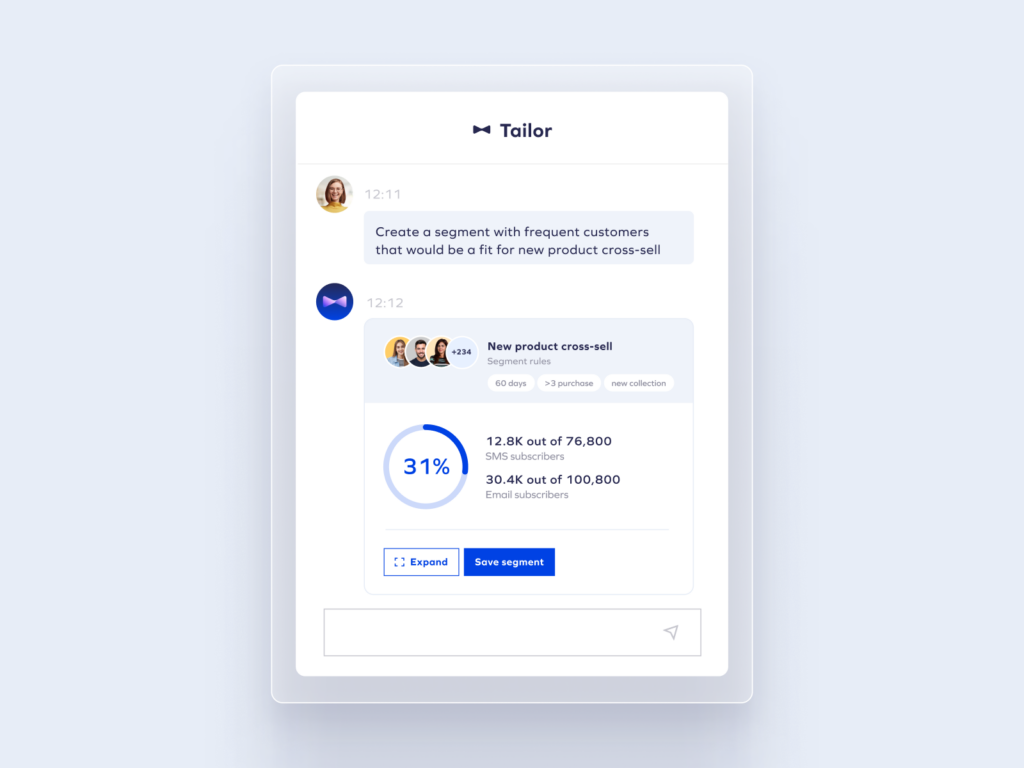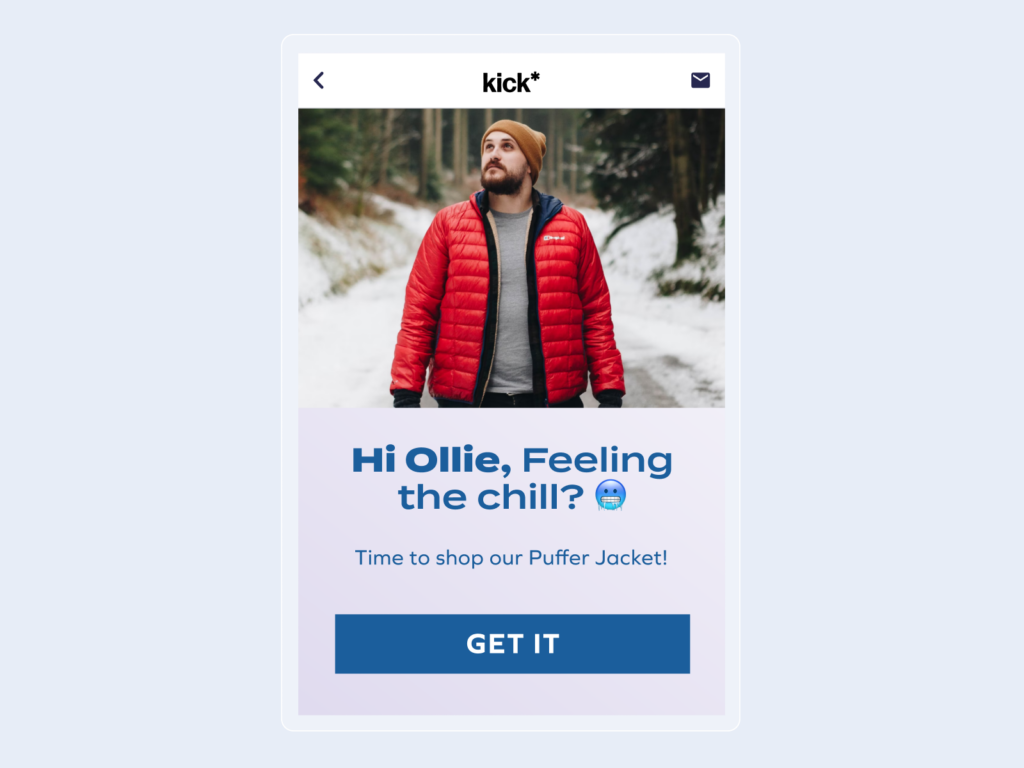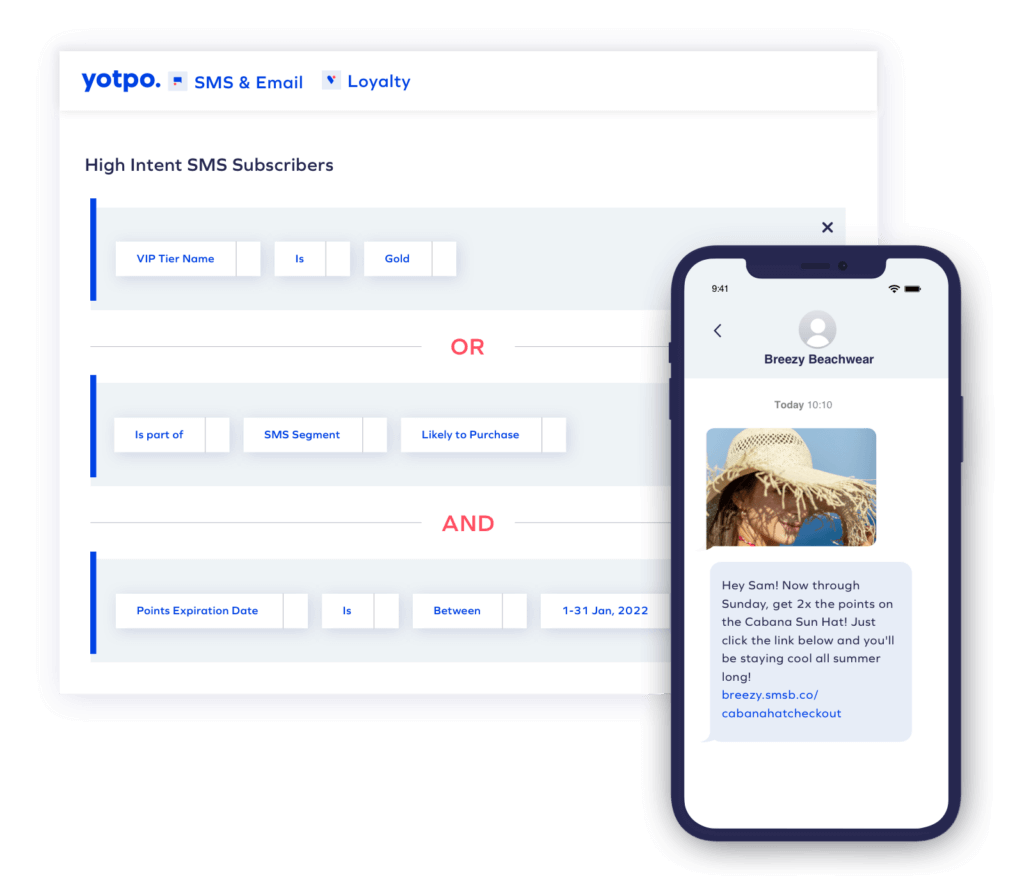Marketers report a remarkable 760% increase in email revenue from adopting personalised and segmented campaigns. As far as maximising the impact of email marketing goes, the case for putting segmentation above all else makes itself.
Why is segmentation so important?
With advanced segmentation capabilities, you can show customers you know exactly where in the lifecycle they are and what their current sentiment towards your brand is. This allows you to make better calls on what communication or messaging is and isn’t helpful for them to receive at any given time. And when customers see emails that speak to their unique experience, they are less likely to think of them as marketing content or spam. This is the most natural way to positively influence everything marketers vie for – higher open rates, higher CTRs, lower unsubscribe rates.
Arguably, taking the time to segment effectively is more important than designing an email and coming up with eye-catching copy. But it doesn’t need to be a mission. Thanks to AI, your email solution should be able to automatically generate segments for you based on your priorities as a business. 
How can email marketers can leverage advanced segmentation?
Most email solutions allow marketers to segment based on demographic factors such as age, gender, and location. But in tight markets such as ANZ, email marketers need to be a touch more savvy when it comes to slicing and dicing their database. Here’s some serious food for thought for email marketers looking to go one better when it comes to segmentation and maximise the impact of email as a channel.
RFM Analysis
RFM stands for Recency, Frequency, and Monetary value. Segmenting customers based on how recently they purchased, how often they buy, and how much they spend allows you to identify and target your most valuable customers with special offers and rewards. Start here if you’re in need of some quick wins.
Behavioral Segmentation
This is a more strategic play. The first step involves creating segments based on customer actions and behaviours on your website, such as:
- Products viewed
- Categories browsed
- Cart abandonment
- Purchase history
Next, you create highly targeted emails. You could tailor your messaging to be more interest-based to show customers you understand them or see what stage in the buying cycle the customer is and give them the appropriate level of encouragement they need to take a desired action. For example, remind a customer who added an item to cart but didn’t check out that your “bestselling puffer” may run out soon.

Predictive Segmentation
This is where you use data science and machine learning to predict a customer’s likelihood to buy, churn, or make a repeat purchase before sending them relevant offers, recommendations, or reminders based on those predictions. But ‘data scientist’ is not your job description, so look for email solutions that have this capability built-in. For instance, Yotpo SMS & Email analyses historical purchase data to predict future behavior and identify customers who are likely to purchase or likely to churn in the next 90 days — allowing you to proactively engage customers no matter what their current sentiment.
 Dynamic Segmentation
Dynamic Segmentation
The ability to automatically update segments in real-time based on a customer’s latest actions and sentiment towards your brand ensures that your messages are always timely and relevant, not just when you’ve take additional steps to do so. For example, a customer should automatically be moved from “prospect” to “purchaser” immediately after they make their first purchase so they don’t end up receiving messages intended for someone who is yet to shop with you. Same for a customer who has just jumped to the next tier in your VIP program.
Psychographic Segmentation
This allows marketers to go beyond demographics and segment based on a customer’s personality, values, attitudes, interests and lifestyle. In terms of marketing emails this translates into content and offers that appeal to customers’ motivations and emotions. For example, environmentally-conscious customers may respond better to sustainability messaging and so on.
Cross-Channel Segmentation
You may think you are being relevant and sending thoughtful and personalised messages but do you thank your customers that regularly refer friends and family? Do you have the ability to segment customers who have not engaged with your loyalty program for a specific period of time, and give them a gentle nudge? Can you see which customers have poor review sentiment and try to win them over with personalised offers?
Having a unified customer data layer across reviews, loyalty, subscriptions, and SMS is vital to sending customers consistent messaging at the right time on the right channel.
What happens when you segment well?
Improved open and click-through rates: Standing out in a sea of subject lines that range from the generic to the corny to the emoji-ridden begins with building highly specific segments. Want to get the attention of the ‘gym bunnies’ in your database? Build a segment based on past purchases (see who has been buying up your preworkout blends, for instance) and personalise the subject line. You’re bound to see better opens and engagement than with a batch and blast about your new drop.
Increased conversion: When emails are tailored to meet the needs and interests of different segments in your database, your subscribers are less likely to see them as marketing emails or spam and more as useful and timely recommendations – leading to more conversions and sales. Think about it, you rarely buy something when you know there is an agenda, but when it’s a genuine recommendation, you tend to seek it out yourself.
Greater customer satisfaction and brand loyalty: Taking the time to build highly specific segments – and making sure they’re up to date – is key to showing subscribers that you understand their evolving preferences fostering a sense of brand loyalty. Not only does this drive repeat purchases among subscribers, but the more they trust you, the more word-of-mouth referrals your brand gets.
Reduced unsubscribe rates: You already know sending irrelevant or generic emails can lead to subscriber fatigue. So, the first thing to do is stop thinking broadly and look at how many different ways you can segment your subscriber base and what they might need or want from you as a brand. Your unsubscribe rate will take care of itself.
TL;DR: If email isn’t working for you as a channel, stop everything you’re doing and have a long, hard look at your segmentation capabilities in your email solution. Whether this means researching the topic, working with a dedicated CSM at your current provider, or talking to our team about your current limitations, you need to get sooner rather than later.












